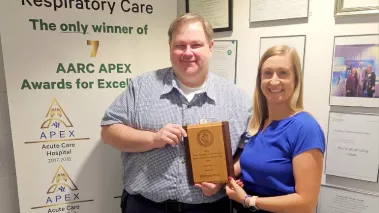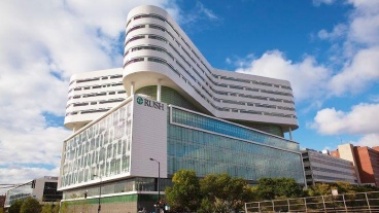You have the grades and the gumption to become a physician, but figuring out the steps needed to earn a medical doctor degree can sometimes be a bit of a headache. This article is just what the doctor ordered.
Let’s break down what an MD is, requirements for getting into medical school, the residency process, and some common career paths for physicians as we take the mystery out of how to map your way to one of the world’s most honorable and fulfilling professions.
What is a Doctor of Medicine?
Doctor of medicine is a degree earned after finishing medical school. Completing a doctor of medicine, or MD, degree puts a doctor of medicine on a path to obtaining a license to practice medicine.
A bachelor’s degree is required to get into medical school. You don’t necessarily need a degree in science — undergraduates with majors as diverse as music and drama, English, history and economics are often accepted to a doctor of medicine program — but you do need a good foundation of prerequisite coursework in science. Classes in chemistry, physics, biochemistry, genetics and biology will help you get there. And that foundation will help when you take the Medical College Admission Test, or MCAT, before applying to medical school.
All medical schools have slightly different requirements, which often go beyond MCAT scores, coursework and grades.
“We want people who have a broad background — not necessarily just scientifically minded — because medicine is more than just the practice of science. It's the practice of dealing with people,” says Rahul Patwari, MD, associate dean of the medical education curriculum at Rush Medical College, who earned a bachelor’s degree in computer science and engineering before pivoting and obtaining a doctor of medicine degree.
Why become a Doctor of Medicine?
Why not become a doctor of medicine? Let’s explore some of the more common reasons people decide to obtain a medical doctor degree.
- A desire to help people. Most people enter the field simply because it gives them the ability to directly help people.
- A scientific mind. It’s a terrific career for those who are scientifically inclined and want to assist others. There are many other ways to help people (becoming a social worker, for example), but a career as a physician allows people to do so while remaining immersed in subject matter they love.
- Meaningful relationships. You’ll have one-on-one interaction with patients and build a rapport with them over time.
- Workday variety. No two days are the same. New challenges and patients will keep you on your toes throughout your career.
- Strong salaries. While physicians continue to be well paid, there are other high-profile jobs where you can make a lot more money for a lot less effort, so it can’t all be about money and status. In most cases, it all comes back to wanting to make a difference.
What is a medical residency? How are you matched up?
A medical residency is a training program that gives those who have completed an MD degree the skills to practice in specific disciplines. Medical doctors are matched to residencies based on school performance, interviews, recommendation letters and their own rankings.
After completing a residency, which takes anywhere from three to nine years depending on the specialty, medical doctor then become an attending physician who can take care of patients and practice on their own. But first they have to find their niche.
“Some students enter medical school knowing exactly what they want to specialize in,” says Jay Behel, PhD, associate dean of student affairs at Rush Medical College. “But for most students there's an ongoing exploration of specialties throughout medical school. There are so many variables to consider: interests, where in the country you want to work, salary and family considerations.”
About a year before graduating with a medical doctor degree, students really start to get serious about deciding on a specialty. By the start of their fourth and final year, they identify residency programs they would like to apply to. They then pull together their portfolio so they can begin the process, which includes the following:
- Recommendation letters. In the summer prior to the fourth year of medical school, students start reaching out to people in the field who know them well, especially those in the specialty they want to pursue, and ask for recommendation letters.
- Medical student performance evaluation. The student’s medical school produces a formal medical student performance evaluation, or MSPE, that helps residency directors evaluate applicants. It is a compilation of the student’s academic performance, strengths and relevant experience. Students are given an opportunity to review the MSPE before it’s uploaded to a national database in the fall of their final year.
- Application. The application is usually completed through an electronic system called ERAS (Electronic Residency Application Service). The application process will look slightly different for some specialties or for those applying for residencies in the military. Applications usually include a list of experiences and interests, transcripts, and recommendation letters and the medical student performance evaluation.
- Interviews. Students then take part in residency interviews from October through January. They generally involve a dinner the night before a day full of interviews with faculty members. Though there will be some differences depending on the program, interview questions are usually similar to what students were asked during their medical school interviews (“Tell us about a tough situation you encountered and how you managed it.” “How do you manage fatigue and conflict?” “Talk about a patient you really connected with.”). Interviewers are trying to find out if your personality is a good fit for the program. Remember, though, that interviews are a two-way street, and residency programs are also trying to put their best foot forward.
- Ranking residency programs. In February, students rank the residency programs they applied to and submit the list to the National Resident Matching Program, or NRMP, which uses a computer algorithm consisting of student rankings and residency program decisions to create matches for the roughly 16,000 students who apply for residencies every year.
- Match Day. This emotional event is the culmination of all the hard work that went into the application process. On the third Friday in March, medical students around the country open envelopes at the same time to find out where they will be receiving their residency training.
With a medical doctor degree complete, the newly minted physicians then start their residency training in the fall. They won’t be paid nearly as much as they will after completing the residency, but resident salaries have been trending higher in recent years. The average salary for residents is more than $59,000, according to Medscape.
How is research important for medical students looking to be matched with their residency while pursuing a Doctor of Medicine degree?
Many students participate in research to explore areas in which they’re interested. At Rush Medical College, for example, students interested in research have the opportunity to collaborate with classmates, physicians at Rush University Medical Center and faculty from Rush University’s other colleges to engage in meaningful medical research in both the clinic and the community. Participation in research can also help bolster a student’s application into competitive and research-oriented fields.
Common career paths for Doctor of Medicine graduates post-residency
Some of the more popular residencies among medical students are internal medicine, general surgery, pediatrics, emergency medicine and psychiatry. But there are so many other options, from dermatology to urology and neurology, that give medical doctors a chance to find their calling.
Residency job responsibilities will vary depending on the specialty. If your specialty is surgery, you’ll spend much of your time in the operating room. Medical doctors who pursue primary care will predominantly work with patients one-on-one in the clinic. They may also have administrative or teaching duties.
Fellowships are an option for medical doctors who want training in subspecialties, such as oncology, cardiology, and allergy and immunology. A fellowship will take one to three years, depending on the field.
Due to a shortage of physicians in the U.S., the job outlook is strong for medical doctors once they are licensed to practice medicine and complete a residency. Competition for jobs in big cities is higher because that’s where everyone clusters to, but there is a large need for physicians in the suburbs and, especially, rural areas.
After putting in so much hard work to get through medical school and a residency, and earning a license to practice medicine, your average salary will range from roughly $200,000 to nearly $500,000 depending on the specialty, your experience and job location, according to Medscape. Family medicine, pediatrics and psychiatry are on the lower end of the salary scale while orthopedics, cardiology and dermatology have salaries at the higher end.
At the end of the day, though, “You’re really making a profound difference in people’s lives,” Patwari says. “And that's really what it’s all about.”
Learn more about the doctor of medicine program at Rush University.







